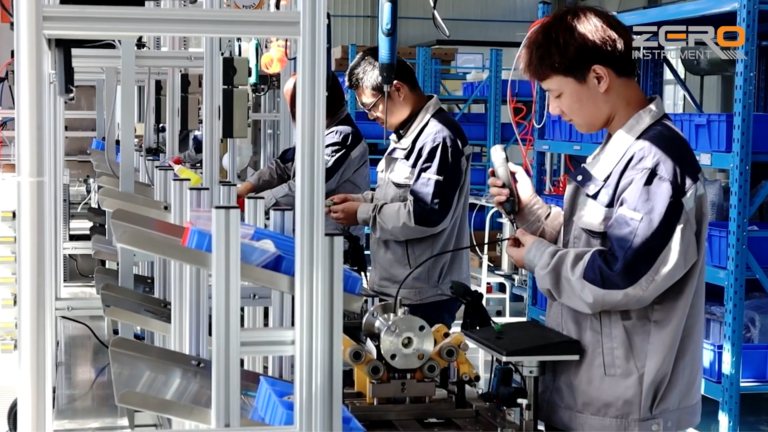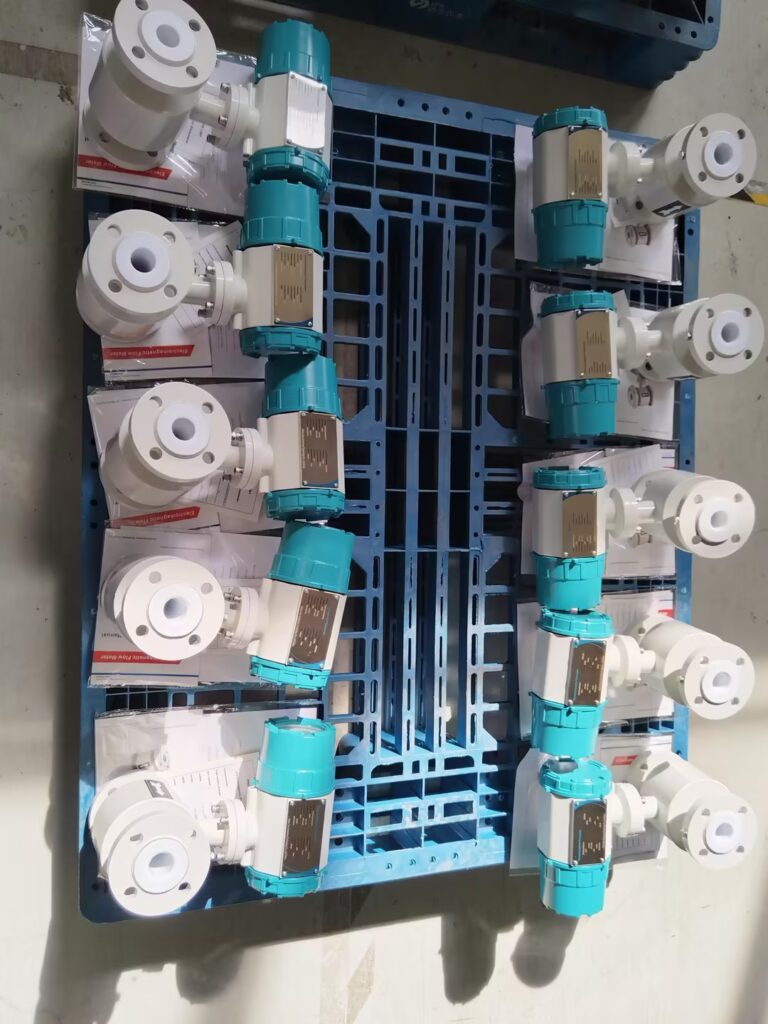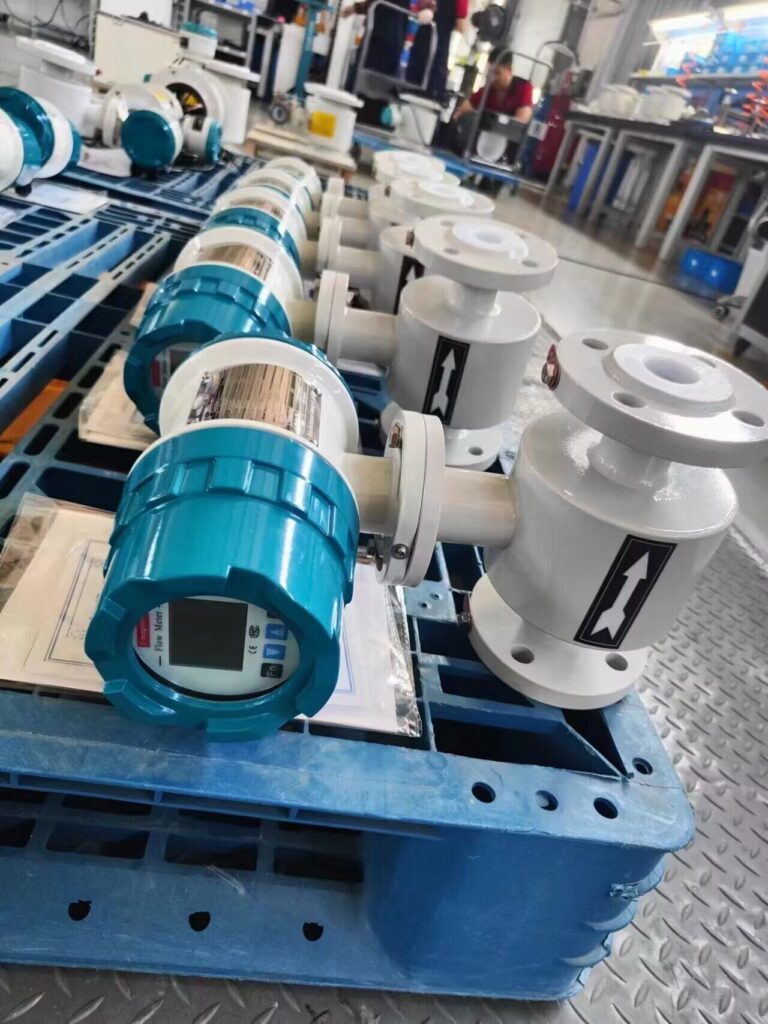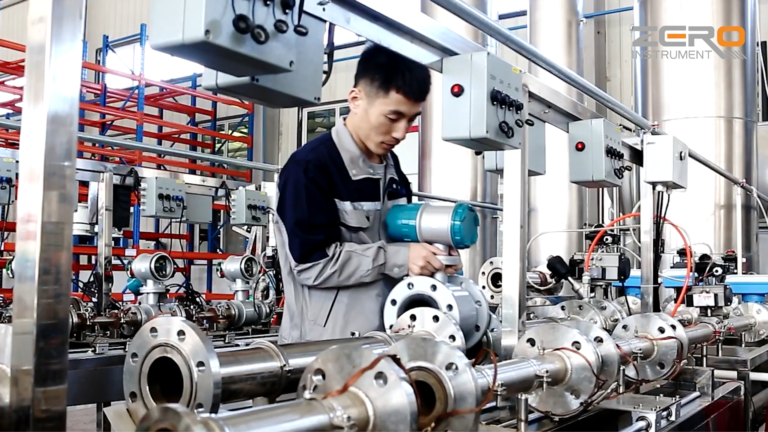Electromagnetic flowmeters are widely used in industrial flow measurement for their accuracy, stability, and versatility. Understanding their operating principles, common issues, and best practices for installation and maintenance is essential for field engineers and maintenance professionals. This article provides a comprehensive overview based on real-world troubleshooting and frequently asked questions.

1. Working Principle of Electromagnetic Flowmeters
Electromagnetic flowmeters operate based on Faraday’s Law of Electromagnetic Induction, which states that a voltage is induced when a conductive fluid flows through a magnetic field. This induced voltage is directly proportional to the fluid velocity and is measured by electrodes placed inside the sensor tube.
2. Suitable Media and Output Types
Electromagnetic flowmeters are used exclusively for conductive liquids—ranging from wastewater and slurries to chemical solutions. They are not suitable for measuring steam or non-conductive fluids.
Typical output signals:
Current Output: 4–20 mA
Pulse/Frequency Output

3. Common Malfunctions and Causes
❌ No Flow Signal Output
Cause: Power supply failure, empty pipe, poor cable connection.
Solution: Check power circuit, confirm the pipe is full, and ensure correct cable wiring.
❗ Fluctuating Output Signal
Cause: Air bubbles in the fluid, unstable flow conditions, electromagnetic interference.
Solution: Ensure proper pipe filling, verify grounding, and avoid installations near strong electromagnetic fields.
⚠️ Measured Value Deviates from Actual Flow
Cause:
Transmitter board malfunction
Incorrect converter settings
Signal cable issues
Solution:
Inspect and, if necessary, replace circuit boards
Reconfigure zero and span settings
Test and reconnect signal cables
🚫 Output Signal Overrange
Solution:
Verify signal loop wiring
Check transmitter configuration
Ensure correct sensor-transmitter pairing

4. Installation Guidelines
Proper installation is critical to ensure accurate readings and long-term reliability:
Pipe Orientation: Horizontal or vertical is acceptable, but the electrodes must be level to avoid trapped air.
Straight Pipe Requirements: At least 5D upstream and 2D downstream of straight piping.
Grounding: Use grounding rings or a third electrode (especially with non-metallic or lined pipes) to avoid signal errors from fluid-induced potentials.
Avoid: Vibration, heat sources, and electromagnetic interference zones.
5. Maintenance Tips and Signal Degradation Handling
If the output signal becomes weak or drops suddenly:
Check for deposits or scaling on the inner wall and clean the tube.
Inspect the liner for damage.
Clean corroded signal terminals or connectors.

6. Critical Role of Grounding
Accurate flow measurement relies on precise voltage detection. Without proper grounding, electrical noise and potential differences can distort the signal. Grounding ensures that the potential of the liquid matches the reference potential of the measuring system, minimizing error and ensuring measurement stability.
7. Summary of Limitations
Electromagnetic flowmeters cannot measure:
Non-conductive liquids (e.g., hydrocarbons)
Gaseous media such as steam
Extremely low flow rates (typically < 0.3 m/s)

8. Final Notes for Field Engineers
Always verify that the flow tube is completely filled with liquid during operation.
Ensure the flow direction matches the indicator on the instrument body.
Handle the flowmeter only by its body, not the transmitter during installation.
In corrosive or dirty service, consider installing a bypass line for maintenance.
